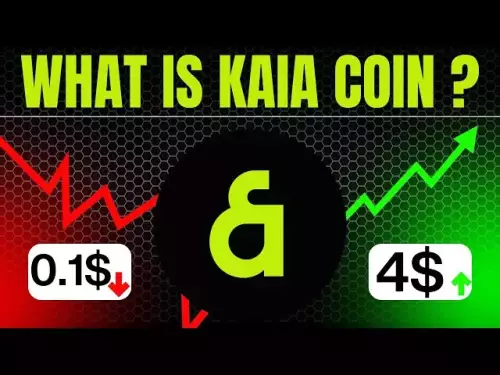-
 bitcoin
bitcoin $112715.707551 USD
-1.71% -
 ethereum
ethereum $4101.475385 USD
-3.01% -
 tether
tether $1.000644 USD
-0.02% -
 bnb
bnb $1207.619465 USD
-6.77% -
 xrp
xrp $2.501451 USD
-3.98% -
 solana
solana $202.947124 USD
-3.32% -
 usd-coin
usd-coin $1.000295 USD
0.04% -
 dogecoin
dogecoin $0.203884 USD
-4.47% -
 tron
tron $0.317154 USD
-1.72% -
 cardano
cardano $0.695009 USD
-4.43% -
 hyperliquid
hyperliquid $38.853961 USD
-8.23% -
 chainlink
chainlink $18.988674 USD
-4.64% -
 ethena-usde
ethena-usde $1.000233 USD
-0.03% -
 stellar
stellar $0.337050 USD
-3.63% -
 bitcoin-cash
bitcoin-cash $536.861728 USD
-1.28%
What to do when UNI fluctuates sideways? How to layout before breaking through
When UNI fluctuates sideways, monitor volume, set price alerts, and use technical indicators like Bollinger Bands to prepare for potential breakouts.
May 01, 2025 at 09:15 pm

When dealing with the sideways fluctuation of UNI (Uniswap's native token), it's crucial to understand the market dynamics and prepare a strategic layout before any potential breakout. Sideways movement, often referred to as consolidation, can be a precursor to significant price movements. This article will guide you through the steps to take when UNI is fluctuating sideways and how to prepare for a potential breakout.
Understanding Sideways Fluctuation
Sideways fluctuation in the context of UNI refers to a period where the price of the token moves within a relatively narrow range without a clear upward or downward trend. This can be frustrating for traders and investors as it may seem like the market is stagnant. However, this phase is often a time of accumulation or distribution, where large players are positioning themselves for the next big move.
During this period, it's essential to monitor key indicators such as volume, moving averages, and support and resistance levels. Volume can give insights into the strength of the current trend, while moving averages can help identify potential breakout points. Support and resistance levels are critical as they can act as barriers that the price needs to break through to confirm a new trend.
Analyzing Market Sentiment
Market sentiment plays a significant role in the movement of UNI. During sideways fluctuations, it's beneficial to gauge the overall sentiment of the market. This can be done by analyzing social media platforms, forums, and news outlets that focus on cryptocurrencies. Tools like Sentiment Analysis can provide quantitative data on how the community feels about UNI.
Additionally, keeping an eye on the Fear and Greed Index can offer insights into the emotional state of the market. A high fear index might indicate that a breakout could be imminent, as fear often precedes significant price movements.
Preparing Your Trading Strategy
When UNI is in a sideways pattern, it's an excellent time to refine your trading strategy. Here are some steps to consider:
- Identify Key Levels: Use technical analysis to pinpoint critical support and resistance levels. These levels will be crucial in determining potential breakout points.
- Set Up Alerts: Utilize trading platforms to set up price alerts at these key levels. This will ensure you are notified when UNI approaches a potential breakout point.
- Plan Your Entry and Exit Points: Decide in advance where you will enter and exit trades. This can help you act quickly when a breakout occurs.
- Diversify Your Portfolio: Consider diversifying your holdings to mitigate risk. While UNI might be in a sideways pattern, other cryptocurrencies might be experiencing more favorable conditions.
Utilizing Technical Indicators
Technical indicators can be invaluable during periods of sideways fluctuation. Here are some indicators to consider:
- Bollinger Bands: These can help identify periods of low volatility, which often precede breakouts. When the bands tighten, it might signal that a significant move is on the horizon.
- Relative Strength Index (RSI): The RSI can indicate whether UNI is overbought or oversold. A divergence between the RSI and the price can signal an impending breakout.
- Moving Average Convergence Divergence (MACD): The MACD can help identify changes in momentum. A crossover of the MACD line above the signal line might indicate a bullish breakout, while a crossover below could signal a bearish one.
Positioning for a Breakout
Once you've identified that UNI is likely to break out of its sideways pattern, it's time to position yourself accordingly. Here's how to do it:
- Monitor Volume: A breakout accompanied by high volume is more likely to be sustainable. Keep an eye on volume spikes as UNI approaches key levels.
- Use Stop-Loss Orders: To manage risk, set stop-loss orders just below support levels if you're anticipating a bullish breakout, or above resistance levels if you're expecting a bearish one.
- Be Ready to Act: Breakouts can happen quickly, so be prepared to execute your trades as soon as the price moves decisively through a key level.
- Stay Informed: Continue to monitor market sentiment and news that could impact UNI. Unexpected developments can influence the direction of the breakout.
Managing Risk During Sideways Fluctuations
Risk management is crucial when dealing with sideways fluctuations. Here are some strategies to consider:
- Position Sizing: Adjust your position sizes to reflect the current market conditions. Smaller positions can help you weather the uncertainty of a sideways market.
- Hedging: Consider using hedging strategies, such as options or futures, to protect your portfolio from adverse price movements.
- Diversification: As mentioned earlier, diversifying your holdings can help mitigate the risk associated with a single asset like UNI.
Frequently Asked Questions
Q: How long can UNI stay in a sideways pattern?A: The duration of a sideways pattern can vary widely. It can last anywhere from a few days to several months, depending on market conditions and the overall sentiment towards UNI.
Q: Can I make profits during a sideways market?A: Yes, it's possible to make profits during a sideways market by employing range trading strategies. This involves buying at support levels and selling at resistance levels within the established range.
Q: What are the signs that a breakout is imminent?A: Signs of an imminent breakout include tightening Bollinger Bands, increasing volume, and a divergence between price and technical indicators like the RSI or MACD.
Q: Should I hold onto UNI during a sideways market?A: Whether to hold onto UNI during a sideways market depends on your investment strategy and risk tolerance. If you believe in the long-term potential of UNI, holding might be a viable option. However, if you're looking for short-term gains, you might consider other opportunities.
Disclaimer:info@kdj.com
The information provided is not trading advice. kdj.com does not assume any responsibility for any investments made based on the information provided in this article. Cryptocurrencies are highly volatile and it is highly recommended that you invest with caution after thorough research!
If you believe that the content used on this website infringes your copyright, please contact us immediately (info@kdj.com) and we will delete it promptly.
- XRP Price Prediction: Weekend Rollercoaster or Rally?
- 2025-10-12 08:45:16
- Bittensor (TAO): Super Bullish Signals Point to Potential 2x Rally
- 2025-10-11 10:25:12
- Silver Price Correction: Navigating the Dip & Identifying Key SEO Keywords
- 2025-10-11 10:25:12
- Decoding Crypto Trends: Bittensor's Bull Run, Cardano's Dip, and LivLive's Presale Buzz in 'Uptober 2025'
- 2025-10-12 08:45:16
- MoonBull: The Crypto Meme Coin Promising 1000x Gains?
- 2025-10-11 10:30:01
- Crypto Payroll Revolution: Stablecoins, Altcoins, and the Future of Salary Payments
- 2025-10-11 10:30:01
Related knowledge

Practical parameter settings for a Bitcoin multi-timeframe moving average system
Sep 18,2025 at 10:54pm
Optimizing Timeframe Combinations for Bitcoin Trading1. Selecting appropriate timeframes is crucial when building a multi-timeframe moving average sys...

How can I filter out false breakouts in Dogecoin high-frequency trading?
Sep 22,2025 at 01:00am
Understanding False Breakouts in Dogecoin Trading1. A false breakout occurs when Dogecoin's price appears to move beyond a defined support or resistan...

Techniques for identifying tops and bottoms in the Bitcoin on-chain NVT model
Sep 20,2025 at 07:54pm
Understanding the NVT Model in Bitcoin Analysis1. The Network Value to Transactions (NVT) ratio is often described as the 'P/E ratio' of the cryptocur...

What does the surge in open interest in Bitcoincoin futures mean?
Sep 20,2025 at 11:18pm
Understanding the Surge in Dogecoin Futures Open Interest1. A surge in open interest within Dogecoin futures indicates a growing number of active cont...

How can I use the Ethereum USDT premium to gauge market sentiment?
Sep 18,2025 at 11:55pm
Understanding the Ethereum USDT Premium1. The Ethereum USDT premium refers to the price difference between USDT (Tether) traded on Ethereum-based plat...

What should I do if Ethereum staking yields decline?
Sep 20,2025 at 06:18am
Understanding the Causes Behind Declining Ethereum Staking Yields1. The Ethereum network transitioned to a proof-of-stake consensus mechanism with the...

Practical parameter settings for a Bitcoin multi-timeframe moving average system
Sep 18,2025 at 10:54pm
Optimizing Timeframe Combinations for Bitcoin Trading1. Selecting appropriate timeframes is crucial when building a multi-timeframe moving average sys...

How can I filter out false breakouts in Dogecoin high-frequency trading?
Sep 22,2025 at 01:00am
Understanding False Breakouts in Dogecoin Trading1. A false breakout occurs when Dogecoin's price appears to move beyond a defined support or resistan...

Techniques for identifying tops and bottoms in the Bitcoin on-chain NVT model
Sep 20,2025 at 07:54pm
Understanding the NVT Model in Bitcoin Analysis1. The Network Value to Transactions (NVT) ratio is often described as the 'P/E ratio' of the cryptocur...

What does the surge in open interest in Bitcoincoin futures mean?
Sep 20,2025 at 11:18pm
Understanding the Surge in Dogecoin Futures Open Interest1. A surge in open interest within Dogecoin futures indicates a growing number of active cont...

How can I use the Ethereum USDT premium to gauge market sentiment?
Sep 18,2025 at 11:55pm
Understanding the Ethereum USDT Premium1. The Ethereum USDT premium refers to the price difference between USDT (Tether) traded on Ethereum-based plat...

What should I do if Ethereum staking yields decline?
Sep 20,2025 at 06:18am
Understanding the Causes Behind Declining Ethereum Staking Yields1. The Ethereum network transitioned to a proof-of-stake consensus mechanism with the...
See all articles


























![Staking ATH: How To Stake $ATH in October 2025 with 523% APY — [Step-By-Step Guide] Staking ATH: How To Stake $ATH in October 2025 with 523% APY — [Step-By-Step Guide]](/uploads/2025/10/15/cryptocurrencies-news/videos/staking-ath-stake-ath-october-apy-stepstep-guide/68eef94d80903_image_500_375.webp)















































